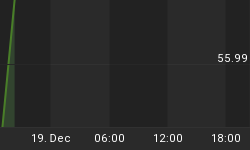The U.S. Dollar is trading better ahead of this morning's U.S. Non-Farm Payrolls Report. Pre-market estimates are for the unemployment rate to climb to its highest level since 1983. The preliminary guess is that an estimated 325,000 jobs were cut in July. This will be down from June which posted a loss of 467,000 jobs. The unemployment rate itself is estimated to rise to 9.6 percent.
Treasury and equity markets will be taking their directions from this report. A worse than expected number is likely to pressure equity markets which would send September Treasury Bonds and Notes soaring to the upside.
A job loss number considerably higher than 325,000 will also squelch demand for higher risk assets which would lead to heavy downside pressure on December Gold and September Crude Oil.
The rally yesterday in the Dollar did not change the trend to up but did alleviate some of the oversold pressure that had been building over the past few weeks because of the tremendous demand for higher risk assets.
The September British Pound is trading lower overnight. This is leading to a call for a weaker opening. Yesterday the Bank of England started the rally in the Dollar with its announcement to extend its asset buyback program. This essentially announced to the trading community that more British Pounds were going to be pumped into the system thereby weakening the currency. The recent rally in the September Pound has primarily been driven by speculators looking for the BoE to temporarily end the program because of improved economic conditions so today's announcement came as a surprise to traders.
The European Central Bank also met yesterday to discuss current interest rate policy and its economic outlook for the near future. Its choice was to leave interest rates unchanged citing that rates were "appropriate" given current economic conditions. Comments afterward were not hawkish but did hint that the ECB felt economic conditions did not warrant any immediate additional stimulus. Before today's report, the September Euro is trading steady.
The U.S. Dollar is only trading flat to lower versus the Japanese Yen overnight despite the weakness in the equity markets. On Thursday, the Yen weakened considerably even though the U.S. stock markets were extremely weak. The Yen has had a tendency to rally on days the stock market exhibits weakness because Japanese investors repatriate their funds. Yesterday was a little different because a report is circulating stating that the Bank of Japan intends to leave interest rates at zero thru at least March 2011 in order to stop the developing deflationary scenario. This is making the Dollar stronger versus the Yen.
The U.S. Dollar turned itself around versus the Canadian Dollar after confirming a closing price reversal bottom earlier in the week. Although the developing top has been labored, yesterday's weakness in the equity and crude oil markets offered a look ahead at what will be the catalyst to force the longs out of the Canadian Dollar and drive the Dollar higher. Today traders will be taking guidance from the U.S. equity markets for direction. At this time, overnight weakness in the equity markets is leading to a weaker September Canadian Dollar on the opening.
















